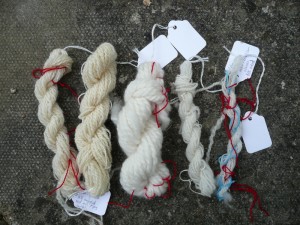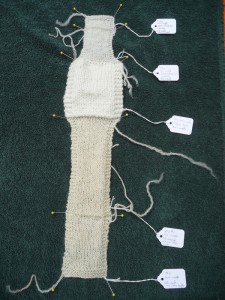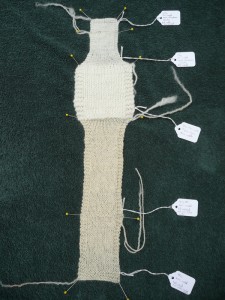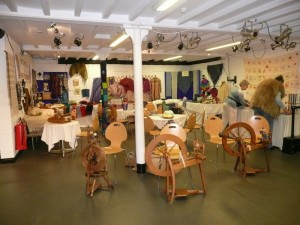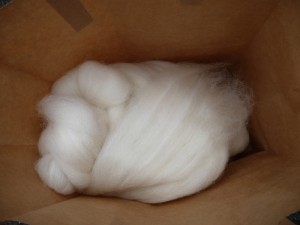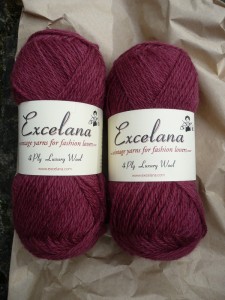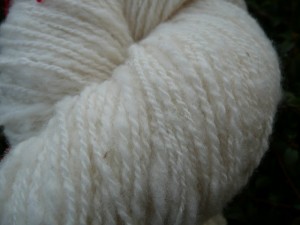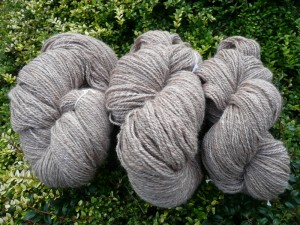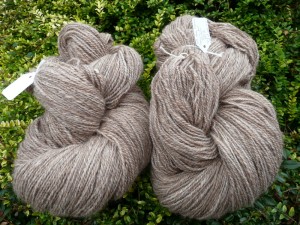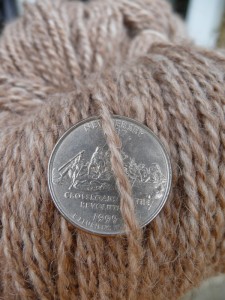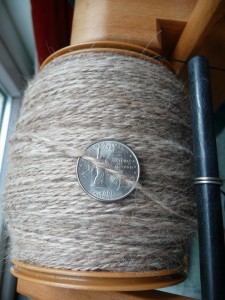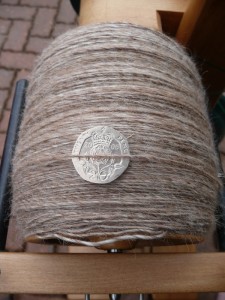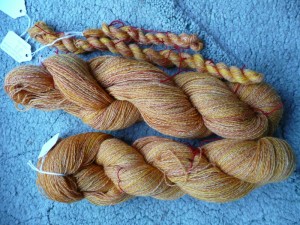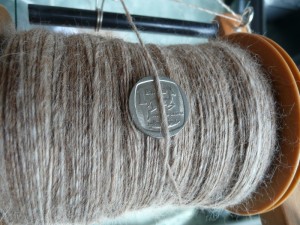Back in May I went on a workshop on Improving Your Spinning with Jan Blight at her house in Basingstoke. Last year I went on her beginner spinning workshop and enjoyed it, and had been looking forward to attending the improver one to learn more.
We started off with finding out a bit more about our wheels, what kind of drive (single or double) system, and tensioning system everyone had, and what ratios were available. I think everyone had different wheels, it was really interesting to be able to see the differences and learn more about the different wheels.
Then after a bit of warm up on fibre we were already spinning, Jan gave our some bluefaced leicester tops, and we spun a semi-worsted yarn. This is semi-worsted because although we were using worsted style spinning, for it to be proper worsted yarn the fibre would have had to be hand combed with all the fibres going in the same direction (so all the tips pointing one way, and all the butts pointing the other). When fibre is commercially prepared like this top is the fibres are all aligned but some might be 180° out with the others. My spinning was not too bad, but I’m afraid I rather underplied this one, more haste, less speed.
For our second sample we were concentrating on getting our hands in time with our feet. This is a great aid to more consistent yarn, if you move your hands at the same time as your feet, and for the same distance each time then you will get the same amount of twist entered into each section of your fibre. So the idea was to draft forward for say 1 inch as you treadled once, then smooth back an inch when you treadled the next time. So each inch of yarn would contain the amount of twist entered from two depressions of your treadles. Luckily I do this fairly automatically, though it was useful to practice keeping more in time, sometimes if I am tired my hands run away from my feet. Again I underplied this one, though it wasn’t as bad as the first.
We stopped for a packed lunch in the garden, it was a lovely sunny day, and I actually had to sit in the shade! And Jan treated us to home made cake – yum!
Then after lunch Jan gave us some organic merino top, very lovely soft fibre, and we had a go at spinning thicker and semi-woollen. For a true woollen yarn you need to hand card your fibre. I had a go at some spinning over the fold, and some a kind of medium-draw. I think I need to practice this! It was fun, but rather lumpy. I would also love to be able to long-draw properly – Jan mentioned that she might hopefully be running a workshop on this later in the year so I shall keep an eye out. I had sorted my plying problem out by this time, patience and less hurrying was the key, so this is a much better finished yarn.
Then to round off the day Jan gave us some merino crossed with dorset horn crossed with lincoln fleece that she had washed, and we had a go at flick carding. We spun this worsted, then the first sample was spiral plied, and the second was just a straight 2ply. Although this was washed I found it rather sticky to spin, and sticky to knit too, it feels better now I have washed it. I think I am just very picky about having no lanolin left in the fibre at all, although I know a lot of people like to leave a bit there when they are spinning.
Here are my skeins of yarn, from left to right as I spun them (and described them above):
And here they are knitted up, but not washed. From the bottom in the order of spinning:
And here is the knitted sample after washing:
It was a really interesting workshop and I learned a lot. It has also been useful to go from fibre, to singles, to finished yarn and then knitted piece and assess how it looks at each stage. I want to make sure that I am making yarn I enjoy knitting with. The difficulty is that I also like to spin a large enough amount so I know I will have enough to knit a complete item, which inevitably takes me a while, so the feedback from knitting my own yarn takes a long time. It was very useful to spin and knit small samples and get pretty instant feedback (well a couple of months seems fairly instant to me!) so I can adjust my spinning to create the yarn I like to knit, even if the samples aren’t going towards a finished garment. I am looking forward to doing some more practicing on my own to try and improve my consistency, and improve my woollen spinning.
